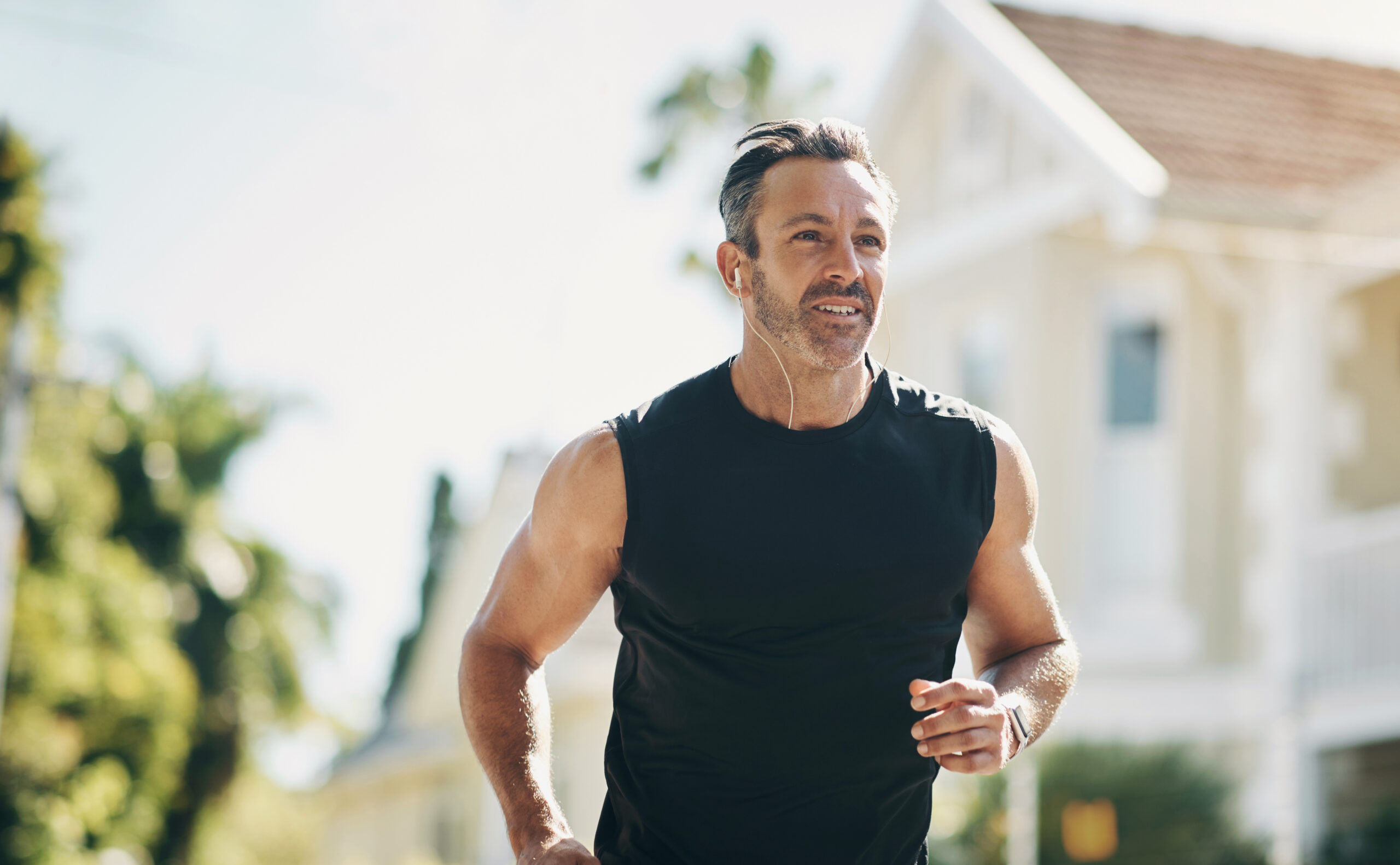Fitness Therapy:
Movement is Medicine
Table of Contents
Written and reviewed by the clinical team at New Life Recovery in Fresno, California, including licensed therapists, medical professionals, and recovery specialists committed to helping individuals build healthier futures.
Fitness Therapy: A Powerful Tool for Recovery
Fitness therapy, or exercise therapy, involves structured physical activity to improve overall well-being. This type of treatment focuses on physical health while still promoting emotional stability and mental clarity.1
Fitness treatment plays a crucial role in healing the body and mind. According to one study, regular physical activity can reduce chronic diseases by 20% to 30% and can even help with depression. This reinforces the connection between exercise and physical and emotional well-being.2
For those struggling with substance use disorder (SUD), fitness therapy offers a natural way to manage cravings, regulate emotions, and build resilience. Exercising helps rebuild self-esteem, improve mood, and enhance cognitive function, all of which are essential components for long-term recovery.

Fitness Therapy at New Life Recovery
At New Life Recovery, fitness therapy is an essential part of our holistic treatment approach. We also incorporate personal training, cold plunge therapy, yoga, and structured exercise programs to help individuals strengthen their bodies and minds—creating the foundation for lasting change.
By integrating movement with evidence-based therapies, we provide a comprehensive path to healing, empowering individuals to love their lives without returning to the cycle of SUD.
The Science Behind Fitness and Mental Health
How Exercise Impacts Brain Chemistry
- Endorphins: These are the body’s natural painkillers, contributing to something often called the “runner’s high,” which is a sense of euphoria after exercise. They reduce pain and boost happiness.
- Dopamine: This is the “feel-good” neurotransmitter and is vital to the brain’s reward system. Exercise naturally boosts dopamine levels, which helps reinforce positive behaviors. This helps the body and mind replace the unhealthy rewards tied to SUD.
- Serotonin: This increases during physical activity, helping the body alleviate feelings of sadness, irritability, and symptoms of depression and anxiety.
Utilizing Fitness Therapy in SUD and Mental Health Treatment
Fitness therapy can play an integral role in SUD and mental health treatment for long-lasting recovery. Some of the ways that this works include:
Supporting Recovery from SUD
Regular physical activity promotes physical health, boosts energy, and enhances sleep – all of which are commonly disrupted by SUD. It also fosters a sense of accomplishment and progress, empowering individuals to tackle the emotional and psychological hurdles of recovery.
Improving Routines and Self-Confidence
As individuals progress in their fitness journeys, such as running a mile or achieving a yoga pose, they build resilience and a greater sense of accomplishment. This discipline translates to other recovery aspects, such as time management and emotional regulation, which are key to long-term success.
Healthy Coping Mechanism for Stress and Emotional Triggers
Whether through intense workouts or more calming exercises like yoga, fitness provides a constructive outlet for stress.
Types of Fitness Therapy Approaches
Cardiovascular Exercise
Strength Training
This process can help individuals build resilience, empowering them both physically and mentally. Strength training also enhances sleep and reduces stress, contributing to emotional stability in recovery.
Yoga and Mindfulness
Yoga and mindfulness practices offer a holistic approach to fitness by integrating physical postures with intentional breathwork. This combination improves flexibility, balance, and mental clarity while promoting emotional regulation.
Yoga helps individuals manage stress, reduce anxiety, and stay present, making it a powerful tool for emotional healing during recovery. The focus on breath control activates the body’s relaxation response, promoting calm and emotional balance.
Outdoor Activities
Outdoor activities like hiking and group sports offer a unique approach to fitness, combining physical exercise with the therapeutic effects of nature. Outdoor activities enhance cardiovascular health while providing a peaceful, stress-reducing environment.
Group sports can foster teamwork and social connections, which are essential for building a strong recovery community. Additionally, nature-based activities like outdoor yoga also offer emotional benefits by lowering stress hormones and enhancing overall mood.

Fitness Therapy as Part of Holistic Healing
Powerful Complement to Evidence-Based Therapies
Connection Between Nutrition, Fitness, and Mental Well-Being
Building a Sustainable Fitness Routine for Long-Term Recovery
Recovery is more than getting through today. It’s about creating a lifestyle that supports long-term well-being. We help individuals develop fitness routines that are realistic, enjoyable, and sustainable, whether it’s yoga, strength training, outdoor activities, or cardiovascular exercise.
Treatment and Healing Programs at New Life Recovery
New Life Recovery provides several SUD and mental health treatment programs that integrate fitness therapy. These options range from inpatient care to partial hospitalization and intensive outpatient programs.
Inpatient Treatment
- Morning yoga to improve flexibility, mindfulness, and emotional regulation
- Strength training and bodyweight exercises to build resilience and self-confidence
- Outdoor activities like hiking and group sports to encourage connection and teamwork
- Breathwork and meditation to reinforce mental clarity and relaxation
Partial Hospitalization Program (PHP)
- Cardiovascular workouts (running, cycling, swimming) to support heart health and mood stabilization
- Circuit training for building endurance and self-discipline
- Guided recreational therapy, incorporating movement-based healing practices like nature walks and stretching sessions
Intensive Outpatient Program (IOP)
- Solo or group workouts at local gyms or outdoor spaces
- Martial arts or dance classes for emotional expression and discipline
- Mindfulness-based movement practices like Tai Chi or guided breathwork
Personal Training and Wellness Programs
At New Life Recovery, personalized fitness training and wellness programs provide tailored client support. Certified trainers help create individualized fitness plans, while complementary therapies like nutritional education and holistic treatments further support recovery.
Role of Community and Group Fitness in Recovery
The Power of Group Workouts in Healing
Building Social Connections Through Fitness
- Helping strengthen communication skills and teamwork
- Encouraging peer support and motivation
- Providing a healthy, substance-free way to connect with others
Encouraging Long-Term Commitment to Physical Health
- Develop healthy coping strategies for stress and cravings
- Cultivate self-discipline and personal growth
- Find joy in movement as a lifelong tool for mental and physical well-being

Treatment Options at New Life Recovery
Cognitive Behavioral Therapy (CBT)
Dialectical Behavior Therapy (DBT)
Eye Movement Desensitization and Reprocessing (EMDR)
EMDR addresses trauma-related symptoms by helping individuals process traumatic memories. It reduces distress and promotes healing from past experiences, which often underlie SUD and mental health conditions.
Motivational Interviewing (MI)
Take the First Step Toward Recovery
If you want to learn more about how fitness therapy can be incorporated into your recovery process, we invite you to contact us at New Life Recovery. Our dedicated team is here to provide you with the support, resources, and guidance you need to transform your life and achieve lasting recovery.
Call us or reach out online to learn more about how fitness therapy can become an integral part of your recovery. Let us help you build a healthy, active, and fulfilling life – one step at a time.
Love Your Life. Choose a Healthier You. Choose Recovery.
Resources
- https://pmc.ncbi.nlm.nih.gov/articles/PMC4831948/
- https://pmc.ncbi.nlm.nih.gov/articles/PMC9902068/
- https://greatergood.berkeley.edu/article/item/five_surprising_ways_exercise_changes_your_brain
- https://pmc.ncbi.nlm.nih.gov/articles/PMC5068479/
- https://pmc.ncbi.nlm.nih.gov/articles/PMC6296269/





